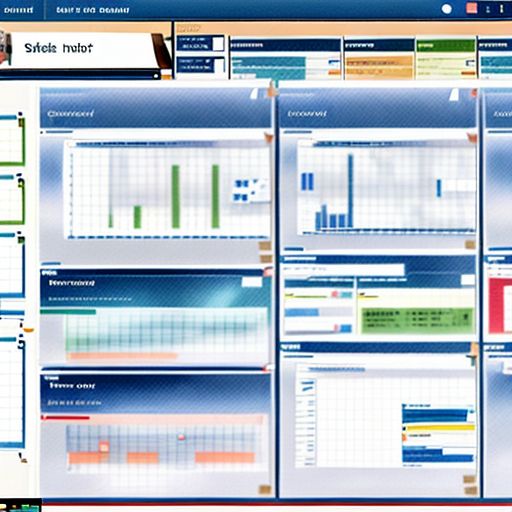Imagine this: you’re leading a team of talented individuals, all working towards a common goal. But without a clear roadmap and efficient system for managing tasks, deadlines, and progress, chaos can quickly ensue. This is where a robust project management tool like Jira swoops in to save the day!
Jira, a powerful and versatile platform developed by Atlassian, has become synonymous with agile project management. But what exactly is Jira, and how can it transform your team’s workflow? In this comprehensive guide, we’ll delve deep into the world of Jira, exploring its features, benefits, and answering the most frequently asked questions.
Understanding Jira: More Than Just a Project Management Tool
Jira is often referred to as a project management tool, but it’s so much more than that. It’s a comprehensive work management platform that caters to a diverse range of teams and projects, from software development to marketing campaigns and beyond. At its core, Jira empowers teams to:
- Plan and Track Projects: Break down large projects into smaller, manageable tasks, assign them to team members, set deadlines, and track progress visually.
- Collaborate Effectively: Facilitate seamless communication within teams and with stakeholders through comments, mentions, file sharing, and real-time updates.
- Visualize Workflows: Utilize customizable boards, such as Kanban and Scrum boards, to visualize project progress, identify bottlenecks, and adapt to changing priorities.
- Automate Repetitive Tasks: Streamline workflows by automating repetitive tasks, such as issue creation, notifications, and status updates.
- Analyze and Improve Performance: Gain insights into team performance through comprehensive reports and dashboards, identify areas for improvement, and make data-driven decisions.
Why Choose Jira? Unlocking the Benefits
Jira’s popularity stems from its remarkable ability to enhance team productivity, streamline processes, and drive project success. Here are some compelling reasons why businesses and teams worldwide choose Jira:
1. Enhanced Collaboration and Communication:
Jira fosters a centralized hub for all project-related information, ensuring everyone is on the same page. Real-time updates, shared workspaces, and integrated communication tools eliminate silos and promote seamless collaboration.
2. Improved Workflow Visibility and Tracking:
With Jira’s intuitive boards and customizable workflows, teams gain a clear overview of project progress. This transparency enables proactive issue identification, timely adjustments, and informed decision-making.
3. Increased Team Productivity and Efficiency:
Jira automates tedious, manual tasks, freeing up valuable time for your team to focus on high-value activities. By streamlining processes and centralizing information, Jira significantly boosts team productivity.
4. Data-Driven Insights and Reporting:
Jira provides powerful reporting and analytics features, allowing teams to track key metrics, identify bottlenecks, and gain actionable insights into their performance.
5. Flexibility and Customization:
One of Jira’s greatest strengths lies in its flexibility. With customizable workflows, issue types, fields, and integrations, Jira adapts to your team’s unique needs and processes.
management.lux36.com/wp-content/uploads/2024/07/jira-dashboard-6694c8.jpg" alt="Jira Dashboard" width="512" height="512">Jira Dashboard
Demystifying Jira: Answering Your Burning Questions
As with any powerful tool, getting started with Jira might seem daunting at first. Let’s address some of the most frequently asked questions:
What is Jira Software used for?
Jira Software is specifically designed for software development teams following agile methodologies like Scrum and Kanban. It helps manage sprints, track bugs, and streamline the software development lifecycle.
What are the different Jira products?
Atlassian offers a suite of Jira products catering to various needs:
- Jira Software: For software development teams.
- Jira Work Management: For business teams like marketing, HR, and operations.
- Jira Service Management: For IT service desks and customer support teams.
How much does Jira cost?
Jira offers a free plan for small teams of up to 10 users. Paid plans with advanced features and higher user limits start at $7.50 per user per month.
Is Jira easy to learn?
Jira, while powerful, has a user-friendly interface. Atlassian provides comprehensive documentation, tutorials, and a supportive community to help users quickly get up to speed.
What are Jira alternatives?
Popular Jira alternatives include Asana, Trello, Monday.com, and WAsana. The best choice depends on your team’s specific needs, budget, and technical expertise.
Conclusion: Embracing the Power of Jira
In today’s fast-paced business environment, effective project management is no longer optional—it’s essential. Jira provides the tools and features necessary to navigate the complexities of project management, streamline workflows, enhance team collaboration, and drive successful outcomes. Whether you’re a seasoned project manager or just starting, exploring Jira’s capabilities can be a game-changer for your team’s productivity and success.
This guide has provided a comprehensive overview of Jira, its benefits, and addressed common questions. We encourage you to dive deeper, explore Jira’s features, and discover how it can transform your team’s approach to project management.
What are your thoughts on Jira? Share your experiences and questions in the comments below! Let’s continue the conversation and explore the world of agile project management together.




